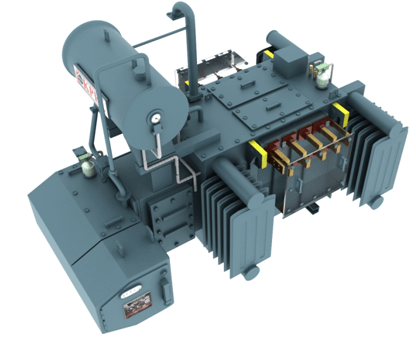Description
Three-phase power distribution delivers a more efficient and reliable power supply compared to single-phase systems, making it the preferred choice for industrial, commercial, and large-scale residential applications. This superior power delivery system offers several key advantages:
What is Three-Phase Power?
Unlike single-phase power, which utilizes a single alternating current (AC) waveform, three-phase power uses three separate AC waveforms, each offset by 120 degrees. This phase offset creates a more balanced and stable power supply, reducing fluctuations and improving overall system efficiency.
Key Benefits of Three-Phase Distribution:
- Higher Power Capacity: Three-phase systems can deliver significantly higher power with the same size conductors compared to single-phase systems. This translates to lower installation costs and reduced energy losses.
- Improved Efficiency: The balanced nature of three-phase power minimizes current imbalances, leading to reduced heat generation in motors and other electrical equipment, extending their lifespan and improving overall efficiency.
- Reduced Voltage Fluctuations: The distribution of load across three phases helps to smooth out voltage fluctuations, ensuring a more stable and reliable power supply for sensitive equipment.
- Better Motor Performance: Three-phase motors are significantly more efficient and powerful than single-phase motors, making them ideal for heavy-duty applications. They provide higher torque and smoother operation.
- Cost-Effective Long-Term Solution: While initial installation costs might be higher than single-phase systems, the long-term benefits in terms of efficiency, reliability, and reduced maintenance costs often outweigh the initial investment.
Applications:
Three-phase power distribution is essential for a wide range of applications, including:
- Industrial Facilities: Factories, manufacturing plants, processing facilities, and other industrial settings.
- Commercial Buildings: Large office buildings, shopping malls, hospitals, and data centers.
- Large Residential Properties: High-end homes with significant power demands.
- Power Transmission and Distribution Networks: The backbone of large-scale power grids.
Components of a Three-Phase Distribution System:
A typical three-phase distribution system includes various components, such as:
- Transformers: Step-down transformers reduce the high voltage from the transmission lines to a suitable voltage for distribution.
- Switchgear: Provides protection and control for the three-phase power system. This includes circuit breakers, fuses, and other protective devices.
- Cables and Conductors: Carry the three-phase power to various locations.
- Meters and Monitoring Equipment: Measure and monitor power consumption and system performance.
- Load Balancing Devices: Used to ensure an even distribution of load across the three phases.
Choosing the Right Three-Phase Distribution System:
The specific requirements for a three-phase distribution system will vary depending on the application and the anticipated load. Factors to consider include:
- Power requirements: The total power needed by the equipment and machinery.
- Voltage levels: The appropriate voltage for the application.
- System configuration: The layout and arrangement of the distribution system.
- Safety regulations: Compliance with relevant electrical codes and safety standards.
